Mark Albins, Ph.D.
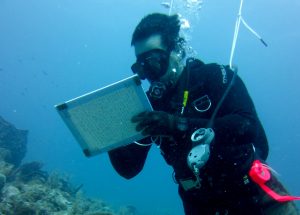
Mark Albins
Postdoctoral Fellow (2013-2016)
Education
BA 2003 University of Hawaii at Hilo
PhD 2011 Oregon State University
Current: Assistant Professor
Email: mark.a.albins@gmail.com
Statement of Research Interests
With strict limits on the funding available to deal with the lionfish invasion in the western Atlantic Ocean, it is critical that managers have access to meaningful estimates of the level of effort required to reduce local lionfish populations and to mitigate their effects on native species. During Mark’s postdoc, we conducted a large-scale field experiment to determine the frequency of manual removal efforts necessary to substantially reduce and maintain local invasive lionfish populations to levels at which their negative effects on native fishes were mitigated. The results of this study suggested that monthly removals were effective at reducing the abundance of lionfish and that tri-annual removals were not different than removal-free controls. Furthermore, no removal level was effective at reducing biomass. These results suggest an incredibly intense level of effort would be required to reduce the populations of lionfish, even at small local scales.
Oscar “Butch” Ayala, M.S.
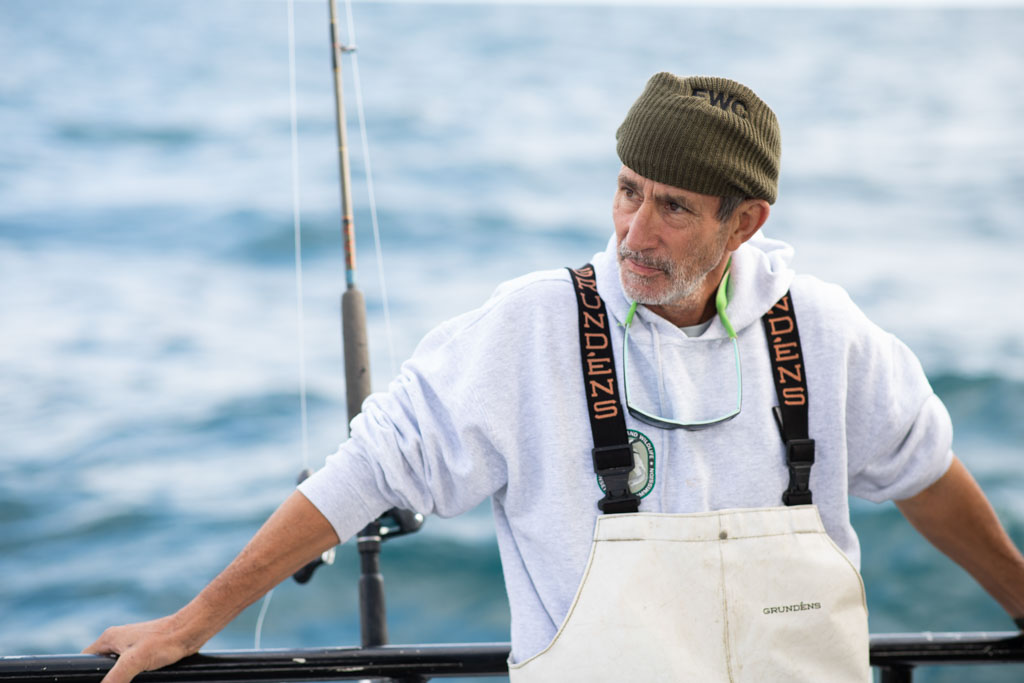
Oscar “Butch” Ayala
MS Student (2014-2020)
Education
BS 1999 University of South Florida
MS 2020 University of South Florida
In Memoriam (May 12, 1963-April 19, 2023)
Most Recent Position: Assistant Research Scientist, Florida Fish and Wildlife Research Institute
Statement of Research Interests
Butch grew up in Paraguay and England and worked at the Florida Fish and Wildlife Research Institute (FWRI) in their Marine Fisheries Dependent Monitoring Program for over 15 years. He was instrumental in the development and implementation of an at-sea observer program to improve data from the for-hire fishery. Data from that program are essential for stock assessments, of which he participated in 27. Among the many other studies Butch was involved in as a full-time staff scientist with FWRI, his masters research was an experimental study on different barotrauma mitigation methods to improve survival of reef fishes that were returned to the water. He focused on red snapper and red grouper, two of the most intensively targeted reef fishes in the eastern Gulf of Mexico. Both species have high discard rates and both are captured from depths that result in barotrauma. Butch found that for both species, recompression to depths of 20 meters or deeper using descender devices resulted in tag return rates (a proxy for survival) that were 2-2.5 times higher than the more commonly used venting method. His work therefore has important management and policy implications for how we release captured reef fishes in the Gulf of Mexico.
Tiffany Boisvert, M.S.
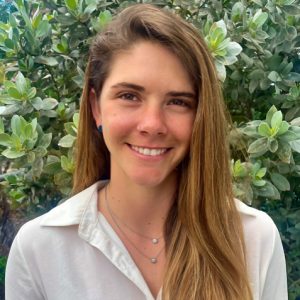
MS Student (2018-2022)
Education
BS 2018 University of South Florida
MS 2022 University of South Florida
Statement of Research Interests
Born and raised in the Florida Panhandle, Tiffany has always had respect for the ocean. She earned a bachelor’s degree in Biology at the University of South Florida in Tampa, FL where she was active in the scientific diving program. This program’s variety of experiences eventually led to her interest in marine science. She was also a coral-reef ecologist at the Fish & Wildlife and Research Institute (FWRI) in St. Petersburg Florida. Her thesis research determined the relationship between restoration effort and the long-term success of outplanted Acropora cervicornis in the upper Florida Keys.
Dinorah Chacin, Ph.D.
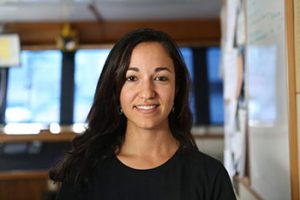
Dinorah Chacin
PhD Student (2014-2019)
MS Student (2011-2014)
Education
BS 2010 Florida International University
MS 2014 University of South Florida
PhD 2019 University of South Florida
Current: Natural Resources Specialist, NOAA SERO
Email: dinorah.chacin@noaa.gov
Statement of Research Interests
Dinorah was a doctoral student interested in understanding how spatial components and heterogeneity in seascapes influenced ecological patterns and processes across multiple spatial and temporal scales. Her research sought to understand how the surrounding seascape influenced communities, species demographic rates, ecological mechanisms, and habitat connectivity. She studied the effects of multiple neighboring habitats (saltmarsh grass, oyster bars, and black mangroves) on the habitat quality of the Eastern Oyster (Crassostrea Virginica). In response to the northward expansion of mangroves observed globally in subtropical regions, Dinorah studied how the growth and survival of the Eastern Oyster was affected by the replacement of saltmarsh grass habitats by mangroves. She also investigated the ecological roles of introduced (non-native) and native algal species in East African seascapes. Her goal was to identify which fishes use algae as habitats and food, and whether there was connectivity between algal beds and other shallow-water habitats. For her research Dinorah incorporated a range of methods including data collection through observations, field-based manipulations, exploration of large data sets using multivariate statistics, ArcGIS, and stable isotope analysis.
Joseph Curtis, M.S.
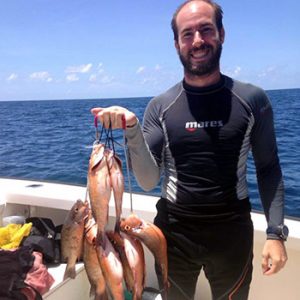
Joseph Curtis
MS Student (2013-2016)
Education
BS 2013 University of California, Santa Cruz
MS 2016 University of South Florida
Current: PhD student, University of Otago (New Zealand)
Email: joseph.curtis@postgrad.otago.ac.nz
Statement of Research Interests
Raised in California, Joseph fell in love with the ocean at an early age and became SCUBA certified at 13. Since then, he has exploring marine life and ecosystems across the globe, diving and snorkeling off the coast of every continent except Antarctica. Joseph earned a BS in Marine Biology from UC Santa Cruz, and is proud to be a banana slug alumni. After earning his degree, Joseph took on a coral reef aquaculture internship with the Mote Marine Lab and developed an interest in returning to Florida to study marine conservation ecology. Joseph also is passionate about outreach and marine science education, and spent two years on Catalina Island teaching children about the oceans through interactive lessons and snorkeling trips. As a Master’s student in the Fish Ecology Lab, Joseph studied the evidence for potential interactions and competition between invasive lionfish and a native grouper species (Graysby) in Biscayne National park. Mostly using applied analyses of stable isotopes, Joseph found that native predator diet was less varied in the presence of higher levels of lionfish, and detected a high degree of resource use overlap that indicated a strong likelihood for competition. Joseph also consulted stable isotopes in layers of lionfish and Graysby eye lenses, using this novel technique to describe trends in diet and movement of both species. Joseph hopes his work can contribute useful information to resource managers and conservation scientists aiming to understand and mitigate the effects of invasive lionfish throughout the western Atlantic. Joseph’s studies were funded by two USF endowed fellowships (Von Rosenstiel and Garrels), Florida Sea Grant Guy Harvey Scholarship, and the NSF Graduate Research Fellowship Program (2014).
Meaghan Emory (formerly Faletti), M.S.
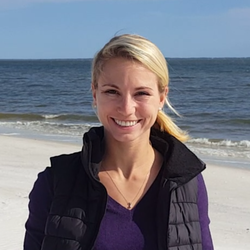
Meaghan Faletti
MS Student (2016-2019)
Education
BS 2013 Florida State University
MS 2019 University of South Florida
Current: Communications Manager, NOAA SEFSC
Email: meaghan.emory@noaa.gov
Awards
NOAA Marine Resource Management Fellowship 2016-2017
Statement of Research Interests
Meaghan received her Bachelor’s degree from Florida State University in 2013, where she primarily studied the effects of invasive lionfish and Red Grouper on community structure in Florida Bay. She came to USF from the Florida Fish and Wildlife Conservation Commission (FWC), where she spent two years coordinating the state’s Lionfish Outreach Program. She spends most of her free time diving, spearfishing, and volunteering with FWC. Meaghan’s future goals include conducting research on recreationally and commercially important marine species to assist in fisheries management. With a strong passion for outreach, she hopes to facilitate communication between the fishing and diving communities with fishery managers to determine knowledge gaps and how to fill them. Ultimately, she’d like to explore how fish population dynamics may affect broad-scale marine ecology and promote the development of ecosystem-based management approaches. For her Master’s work, Meaghan studied movement of the recreationally important Hogfish, Lachnolaimus maximus, in the Gulf of Mexico using stable isotope analysis.
Ileana Freytes-Ortiz, Ph.D.
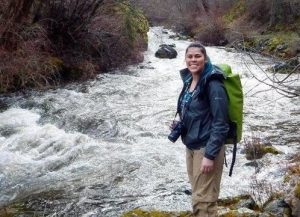
Ileana Freytes-Ortiz
PhD Student (2012-2018)
Education
BS 2011 University of Puerto Rico
MS 2017 University of Idaho
PhD 2018 University of South Florida
Current: Data Analyst, Rakuten Marketing
Email: ileana.freytes.ortiz@gmail.com
Awards
NSF LSAMP Bridge to the Doctorate 2012
NSF Graduate Research Fellowship Program 2013
USGS Climate Communication Fellowship Program 2016
Pathways Award, USF Latin Community Advisory Committee 2016
Statement of Research Interests
Raised in Puerto Rico and a proud boricua, Ileana was a competitive swimmer in high school and fell in love with marine life during open-water swims off the coast of the island. She completed a BSc from the University of Puerto Rico and transplanted to Florida for her graduate degree. Ileana is now a PhD Candidate interested in how anthropogenic climate change, and the ocean acidification that comes hand-in-hand with it, will affect predator-prey relationships, particularly between intertidal mussels and crabs. Her research has included developing and building climate-controlled aquarium systems and conducting laboratory-based ecological experiments. Ileana is also very interested in how we communicate and educate about these issues, so part of her dissertation focused on developing and assessing a climate change curriculum. As a science communicator, Ileana has also worked with several outreach and education programs, including working in the leadership team of the St. Petersburg Science Festival since 2014. She hopes to continue her work in Science Communication and Environmental Education, inspiring people to conserve and care for our natural environments.
Brittany Hall-Scharf, M.S.
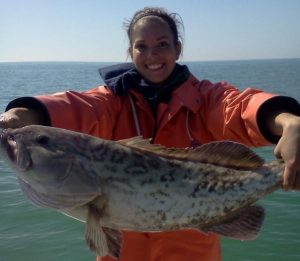
Brittany Hall-Scharf
MS Student (2012-2014)
Education
BS 2009 Florida State University
MS 2014 University of South Florida
Current: Extension Agent, Florida Sea Grant
Email: bhallscharf@ufl.edu
Statement of Research Interests
For Brittany’s masters research, she studied the trophodynamics of a generalist predatory fish (Spotted Seatrout, Cynoscion nebulosus). First, she analyzed how diet responded to changes in the seagrass coverage of Tampa Bay by comparing stomach contents from studies conducted in the 1980s, 1990s, and 2000s. During that period of time, seagrass in Tampa Bay made an incredible recovery from losses experienced in the mid-twentieth century. Brittany found that the ontogentic shifts in diet of seatrout were generally conserved across studies, but that some prey were reflective of a change from phytoplankton to benthic basal resources, consistent with seagrass recovery. She followed the diet study with a two-stage experiment that found that Spotted Seatrout did not display preference between Pinfish (Lagodon rhomboides) and Clown Goby (Microgobius gulosus) prey, two morphologically- and behaviorally- different species.
Andrea Jerabek, M.S.
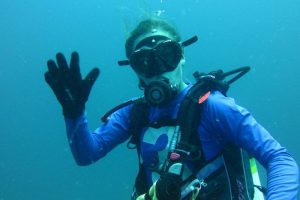
Andrea Jerabek
Visiting MS Student (2015)
Education
BS 2014 State University of New York College at Geneseo
MS 2015 Northeastern University
Current: Three Seas Program Manager, Northeastern University
Email: a.jerabek@northeastern.edu
Statement of Research Interests
Andrea came to the Fish Ecology Lab to complete a research-based internship in partial fulfillment of a MS from Northeastern University. In addition to being a wonderful colleague in the lab, participating on a number of different projects led by both Dr. Stallings and students, she developed a very nice experiment that tested the effects of different antifouling paints compared to manual scrubbing on settlement cages. She found that three paints performed well to reduce fouling of the cages during the initial six weeks of the experiment, but the efficacy of “ecofriendly” paint began to decrease during an extended deployment that lasted 14 weeks. The macro-community composition, biomass, and percent cover of settled organism on tiles within cages treated with copper-based paints (21% and 40% concentrations) were indistinguishable from tiles within the manually scrubbed cages. In contrast, settlement to tiles from the “ecofriendly” treatment was different in composition of macro-community and lower in biomass, suggesting the presence of local effects and therefore rendering it unsuitable for use in settlement experiments. The results of this study suggest that reduced-copper paints have the potential to serve as an alternative to manual maintenance, which may be useful for deployments in locations that are difficult to access on a frequent schedule.
Benjamin Kurth, M.S.
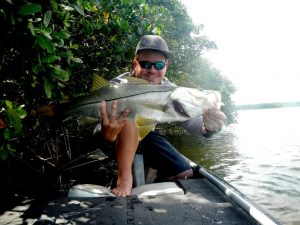
Ben Kurth
MS Student (2013-2016)
Education
BS 2011 Stetson University
MS 2016 University of South Florida
Current: Geospatial Technician, Quantum Spatial
Email: bkurth@mail.usf.edu
Awards
Paul Getting Memorial Fellowship 2014-2015
Knight Fellow 2016
NSF Graduate Research Fellowship Program Honorable Mention 2014 & 2015
Statement of Research Interests
Ben was a masters student whose intent was to further his knowledge of fisheries biology and management, especially for recreationally important gamefish. Ben’s thesis focused on Atlantic Tarpon and had two important components. The first used a multi-year, genetic tagging database to better understand the life history and biology of juvenile and sub-adult Tarpon. The second component used chronologically-based stable isotope analysis of adult Tarpon eye lenses to better understand both juvenile and adult habitat use, movements, and trophic dynamics. Ben is from Tampa, FL and spends as much time on the water as he can for both academic and personal interests. He has worked as a biologist for Mote Marine Laboratory investigating cold kill effects on fish populations, with the Environmental Protection Agency studying the Gulf of Mexico hypoxic zone biogeochemistry, FWC’s Fish and Wildlife Research Institute in the Molecular Genetics laboratory, and currently is employed as a Geospatial Technician at Quantum Spatial.
Garrett Miller, M.S.
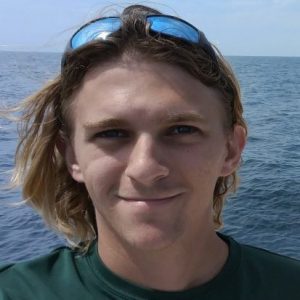
MS Student (2017-2024)
Education
BS 2015 University of South Florida
MS 2024 University of South Florida
Current: Field Applications Engineer, Teledyne Wedd Research
Email: Garrett.Miller@Teledyne.com
Statement of Research Interests
Born and raised in Florida, Garrett grew up on and around both Florida coasts. After completing his Bachelor’s in Biology from the University of South Florida St. Petersburg in 2015, he spent a year or so in various realms of the maritime industry. For his Master’s research focus, Garrett quantified the long-term population and community dynamics of estuarine fishes and invertebrates. His work found a mix of change and stability, highlighting the complexity of how ecosystems are responding to changing conditions.
Jonathan Peake, Ph.D.
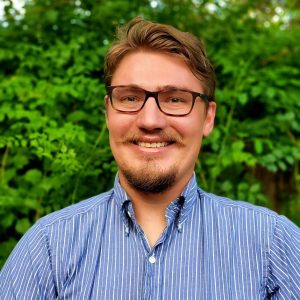
MS Student (2016-2024)
Education
BS 2016 University of Miami
PhD 2024 University of South Florida
Current: Data Scientist, NOAA NWFSC
Email: jonathan.peake@noaa.gov
Statement of Research Interests
For his dissertation, Jon studied broad-scale dynamics of western Atlantic teleost communities. In addition to being a fish geek, Jon has a passion for mathematics and pursued a triple major at the University of Miami. He holds a Bachelor of Science degree with majors in Marine Science, Biology, and Mathematics and a Doctoral degree in Biological Oceanography. Jon became fascinated with metacommunity theory, which seeks to reconcile the local and regional processes that influence the distribution of organisms in space and time. Jon used his quantitative skills in a comprehensive study of the spatiotemporal dynamics of marine metacommunities in the Gulf and Caribbean.
Martina Plafcan, M.S.
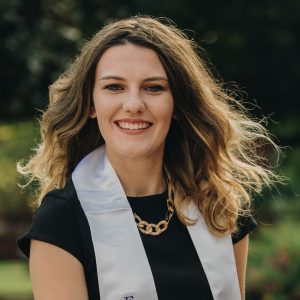
MS Student (2018-2022)
Education
BS 2019 East Carolina University
MS 2022 University of South Florida
Current: Assistant Scientist, FLDEP
Email: martina.plafcan@FloridaDEP.gov
Statement of Research Interests
Martina studied how microplastic abundance changed over time in the Gulf of Mexico using agglutinated benthic foraminifera that have incorporated microplastics into their tests. She also conducted an experimental study that tested whether contemporary concentration levels affected the bleaching threshold of corals. She has a Bachelor’s degree in Biology from East Carolina University.
Tim Pusack, Ph.D.
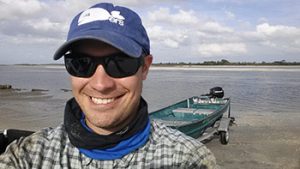
Tim Pusack
Postdoctoral Fellow (2014-2017)
Education
BA 2005 Colgate University
PhD 2013 Oregon State University
Current: Associate Professor, Williams College
Email: tjp3@williams.edu
Statement of Research Interests
Tim was postdoctoral researcher that studied community ecology of oyster reefs. His work combined both manipulative and observational field studies with controlled mesocosm experiments. Specifically he studied the interactions between the eastern oyster (Crassostrea virginica) and various predators: crown conch (Melongena corona), southern oyster drill (Stramonita haemastoma), and mud crabs (Panopeus spp.). One of the main goals of his research was to describe how fluctuations in the physical environment altered predator-prey dynamics. Changes in abiotic factors such as temperature and salinity can affect species behaviors, such as feeding rate or anti-predator behaviors, and subsequently alter predator-prey dynamics. For example, under certain abiotic conditions, rapid increases in the number of predators can result in high densities of predators called “Consumer fronts”. These fronts can rapidly deplete prey populations. However understanding the predator-predator interactions at these high densities is understudied, but vital to accurately describe predator-prey dynamics. Through the use of field and lab experiments Tim sought to describe these effects. Tim is also interested in understanding the effects of artificial and natural reefs on fish populations. He regularly participated in fish surveys and collections at our sites in the Gulf of Mexico. His interests also lie in using population genetic tools (e.g., microsatellites, SNPs) to answer ecological questions such as population persistence, dispersal and movement, and population size (effective and census). In addition to his research, Tim is passionate about teaching. He has taught many courses and during his postdoc he taught Ecology, Environmental Science, and developed a Marine Ecology field course set to occur at the Keys Marine Laboratory in the Florida Keys.
Peter Simard, Ph.D.
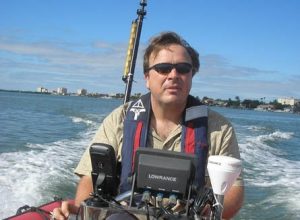
Peter Simard
Postdoctoral Fellow (2012-2015)
Education
BS 1995 Dalhousie University
PhD 2012 University of South Florida
Current: Visiting Professor of Environmental Studies, Eckerd College
Email: simardpa@eckerd.edu
Statement of Research Interests
Using Digital SpectroGram (DSG) recorders to collect sound files, Peter and Dr. Stallings quantified the use of artificial reefs by recreational boaters compared to nearby, paired natural reefs. Peter developed an automatic detection algorithm that was used to identify boat noise in individual files using the harmonic peaks generated by boat engines, and by comparing the sound amplitude of each file with surrounding files. In all four pairs, visitation rates were significantly higher at the artificial reef than the natural reef. This increase in boat visitation was likely due to actual or perceived increased quality of fishing and diving at the artificial reefs, or to lack of knowledge of the presence or locations of the natural reefs. Inshore reefs (<15 m depth) had high variability in monthly visitation rates, which were generally highest in warmer months. However the seasonal signal was dampened on offshore reefs (>25 m depth). This study was the first to use acoustic data to measure participant use of boating destinations, and highlights the utility of acoustic monitoring for the valuation of this important ecosystem service provided by artificial reefs.
Orian Tzadik, Ph.D.
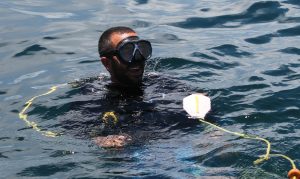
Ori Tzadik
PhD Student (2011-2016)
Education
BS 2004 University of Texas at Austin
MS 2010 University of Puerto Rico – Mayaguez
PhD 2016 University of South Florida
Current: Natural Resources Specialist, NOAA SERO
Email: orian.tzadik@noaa.gov
Statement of Research Interests
Ori’s dissertation research examined life-history information on diet and movement patterns in Goliath Groupers via the use of a novel technique. Specifically, the microchemical analyses of fin rays tested the different trends among locations via non-lethal sampling techniques. His research highlighted the different patterns between the west and east coasts of Florida, as well as the juvenile habitats in the southwestern part of the state. Although focused on Goliath Grouper, the non-lethal technique of using chemical analysis on chronologically deposited tissues of fin rays can be applied to other species. In addition to Ori’s dissertation, he also led the most comprehensive review to date of non-otolith tissues in fishes as chronological tissue recorders.
Kara Wall, M.S.
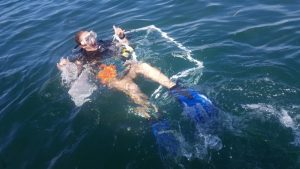
Kara Wall
MS Student (2014-2017)
Lab Manager (2012-2014)
Education
BS 2010 University of Tampa
MS 2017 University of South Florida
Current: Biological Scientist II, Florida Fish and Wildlife Research Institute
Email: Kara.Wall@MyFWC.com
Statement of Research Interests
Kara’s masters thesis research focused on the ecology of epibenthic communities in the eastern Gulf of Mexico. Specifically, she investigated how grazing from sea urchins affected the composition of epibenthic communities. Her work took place on local artificial and natural reefs, and was primarily conducted on SCUBA. This work combined observational community data with experimental settlement data in an effort to better understand the complex interactions that dictate the composition of the local epibenthos. Although she is originally from Indiana, Kara has lived in Florida for nearly a decade. After the completion of her Bachelor’s degree across the bay at the University of Tampa, she spent nearly three years in Miami working for the National Park Service at Biscayne National Park. Kara returned to the Tampa Bay area in 2012 to join USF’s Fish Ecology Lab as a technician and lab manager before she began her Master’s education in 2014.